News
Pressed Plywood Production Process: A Step-by-Step Guide
Table of Contents
Introduction
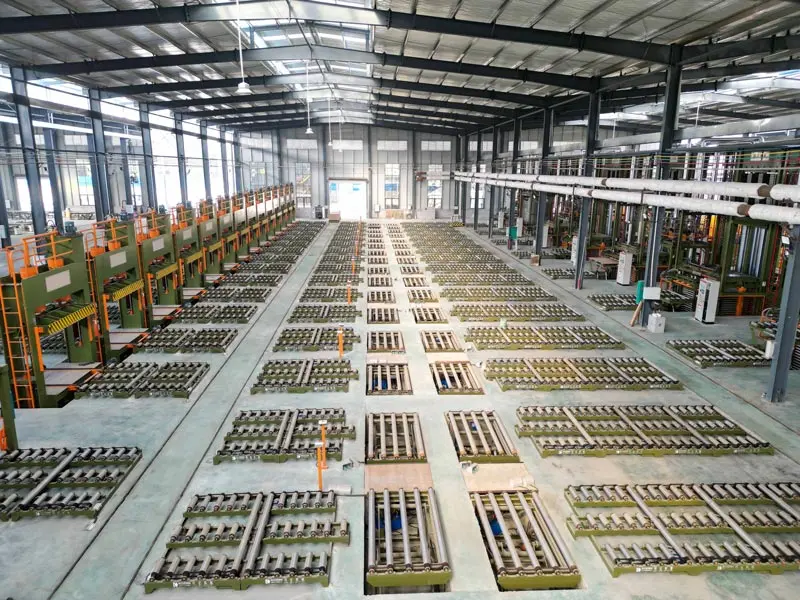
Pressed plywood, commonly known as laminated plywood, is one of the most versatile and durable materials used in a variety of industries. From furniture and cabinetry to construction and flooring, pressed plywood is a key material in modern manufacturing. Its flexibility, cost-effectiveness, and superior strength make it a popular choice for many businesses.
For entrepreneurs or manufacturers looking to enter the plywood production industry, understanding the production process and the required machinery is critical for success. At Shandong Chuangxin Automation Equipment Co., Ltd., we specialize in providing high-quality wood-based board machinery and hydraulic equipment tailored to meet the needs of plywood manufacturers worldwide.
This blog will take you through the pressed plywood production process, from the preparation of raw materials to the final pressing. We will also highlight the essential machinery needed at each stage and discuss how our equipment can enhance the efficiency and quality of your production.
The Basics of Pressed Plywood Production
Pressed plywood is produced by layering thin sheets of wood, called veneers, and bonding them together with an adhesive under high pressure and heat. The result is a strong and durable material that can be used for a variety of applications. The plywood production process involves several critical steps, each requiring specialized equipment to ensure quality results. Below, we will break down each stage of the process in more detail.
1. Veneer Preparation: The First Step in Pressed Plywood Production
Veneer preparation is one of the most critical stages in the plywood production process. Veneers are thin slices of wood that are peeled or sliced from logs, and they form the layers of the plywood. The thickness of the veneers can vary depending on the desired finished product.
How Veneers are Made
The logs, which are typically debarked to remove any outer bark, are placed into a veneer lathe machine that spins the log against a blade to peel it into thin sheets. These sheets are then cut to the required dimensions and dried to reduce moisture content. The drying process is crucial as it ensures the veneers are stable and free of excessive moisture, which can lead to warping or bonding issues during the pressing process.
The veneer lathe machine is a crucial tool in this phase, as it allows for precise and uniform veneer thickness. With advanced technology, our Veneer Lathe Machines at Shandong Chuangxin ensure smooth, uniform peeling with minimal defects, ensuring the veneers are of consistent quality for further processing.
Equipment Used:
- Veneer Lathe Machine: This machine peels logs into thin layers with high precision, ensuring uniform veneer thickness that is critical for high-quality plywood.
2. Gluing and Adhesive Application: The Bonding Process
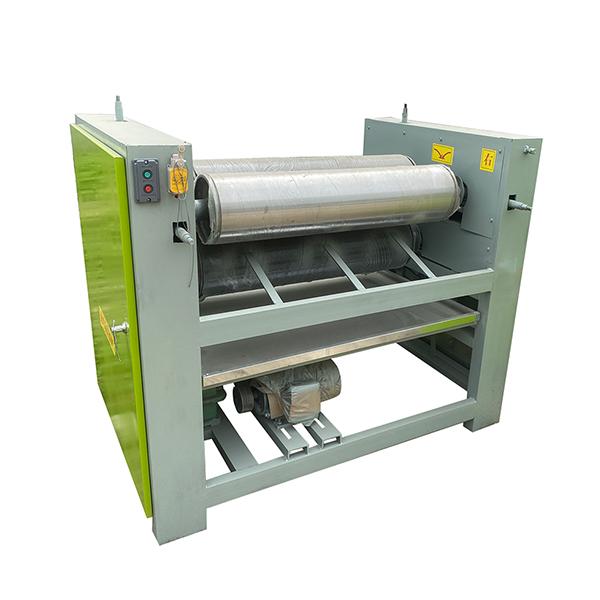
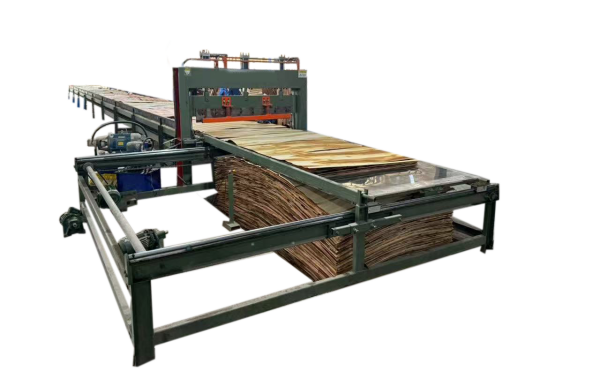
Once the veneers are prepared, the next step is to apply the adhesive that will bond the layers together. The choice of adhesive depends on the intended use of the plywood. Common adhesives include urea-formaldehyde, phenol-formaldehyde, and melamine, each offering different levels of strength, moisture resistance, and durability.
The adhesive is applied evenly to the surface of each veneer using a glue spreader, which ensures that every layer is covered uniformly. This step is essential to achieving a strong bond between the veneers and ensuring that the final plywood product has the desired properties.
Uniform glue application is crucial for ensuring strong adhesion and preventing the veneers from delaminating during use. Any inconsistencies in adhesive spread can lead to weak spots and reduced durability in the final plywood product.
Equipment Used:
- Glue Spreader: This piece of equipment ensures that the adhesive is spread evenly across the veneer surfaces, providing a consistent bond.
- Plywood Paving Machine: Used to layer the veneers with precise placement, ensuring alignment for the pressing stage.
3. Pressing: The Heart of Pressed Plywood Production
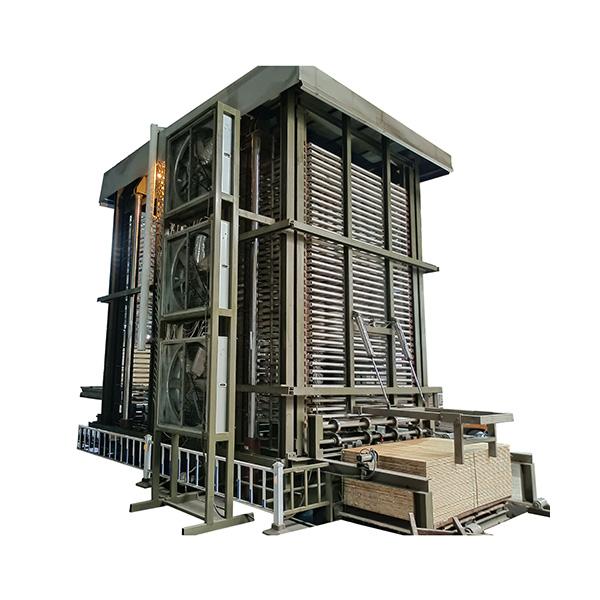
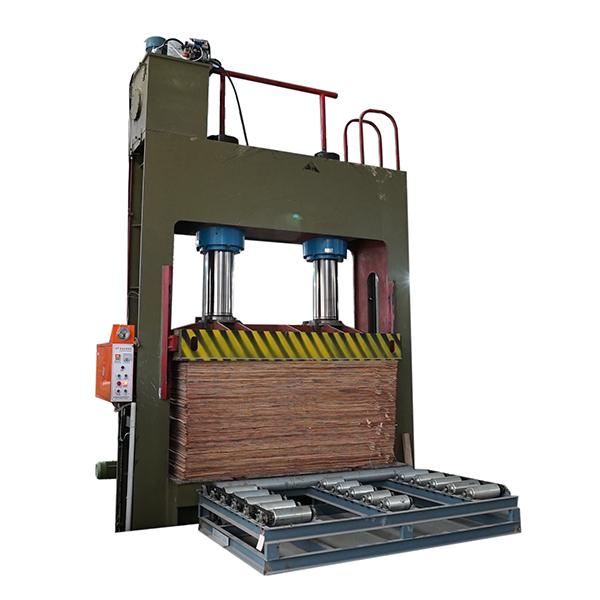
The pressing process is where the veneers are bonded under heat and pressure. The adhesive needs to be cured under these conditions to form a strong and durable bond between the veneers. This step is crucial for the final strength, stability, and smooth surface of the plywood.
There are two primary types of pressing used in plywood production: hot pressing and cold pressing. The choice of method depends on the type of plywood being produced and the required properties of the finished product.
Hot Pressing
Hot pressing involves applying both heat and pressure to the veneers. The temperature typically ranges between 120°C and 180°C, depending on the adhesive used. The heat helps to cure the glue, while the pressure ensures that the veneers are firmly bonded. This method is most commonly used for high-strength plywood that will be subjected to heavy loads.
Cold Pressing
Cold pressing uses hydraulic pressure without the application of heat. This method is used for plywood that requires less strength and is more energy-efficient. The pressing process is slower than hot pressing, but it is ideal for applications where energy efficiency is a priority.
Hot Press Machines are typically used in the production of high-strength plywood, while Cold Press Machines are better suited for applications where energy efficiency and cost-effectiveness are more important.
Equipment Used:
- Hot Press Machine: Delivers high-efficiency pressing with uniform temperature and pressure distribution, ensuring strong bonding and smooth surfaces.
- Cold Press Machine: Provides uniform hydraulic pressure without heat, ideal for energy-efficient production.
Pressed Plywood Production Equipment: Key Machinery for Success
Each step of the pressed plywood production process requires specialized equipment. Let’s take a closer look at the essential machinery used in the process:
| Equipment | Function | Benefits |
|---|---|---|
| Veneer Lathe Machine | Peels logs into thin sheets of veneer. | Provides uniform slicing, essential for quality plywood. |
| Glue Spreader | Applies adhesive evenly to veneer surfaces. | Ensures strong bonding and prevents delamination. |
| Hot Press Machine | Applies heat and pressure to bond glued veneers. | Ensures strong, durable plywood with smooth surfaces. |
| Cold Press Machine | Bonds veneers without using heat. | Ideal for energy-efficient production and specific applications. |
| Edge Trimming Machine | Trims the edges of plywood panels after pressing. | Provides clean, smooth edges, reducing waste. |
| Saw-Sanding Production Line | Cuts edges and sands plywood for smooth finishes. | Enhances surface quality, readying panels for final use. |
At Shandong Chuangxin, we provide high-performance Hot Press Machines, Cold Press Machines, and other essential machinery designed for precision and efficiency. Our machines are built with advanced technology that guarantees consistent results, reduced maintenance, and increased production capacity.
Advantages of High-Quality Pressed Plywood Production Equipment

Investing in quality equipment ensures that the production process is efficient, cost-effective, and capable of delivering high-quality results. Below are the key advantages of using premium machinery in pressed plywood production:
1. Increased Productivity
Advanced machines with automated features, such as our Hot Press Machine and Cold Press Machine, reduce manual labor and speed up the production process. Automated loading, unloading, and pressing functions minimize downtime and improve overall efficiency.
2. Consistent Quality
With precise controls for temperature, pressure, and adhesive application, our machinery guarantees that every plywood panel is consistent in quality. This leads to fewer defects, higher customer satisfaction, and greater overall product reliability.
3. Energy and Cost Efficiency
Our Cold Press Machine and Glue Spreader are designed with energy-efficient features, helping manufacturers reduce energy consumption and lower production costs. These machines are engineered for long-lasting durability, minimizing the need for frequent repairs and replacements.
Common Challenges in Pressed Plywood Production and How to Overcome Them
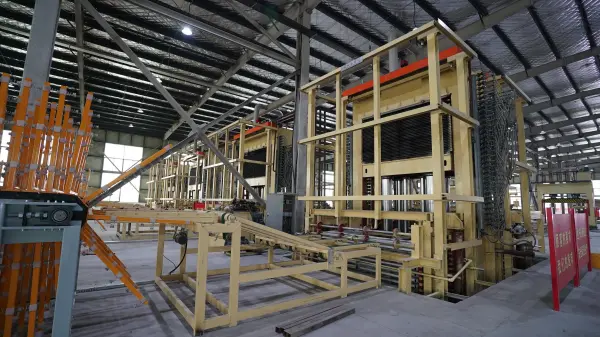
1. Inconsistent Glue Application
Inconsistent glue application can lead to weak bonds and delamination. This issue can be solved by using high-quality Glue Spreaders, like those offered by Shandong Chuangxin, which ensure uniform glue coverage for reliable adhesion.
2. Pressing Defects
Uneven pressure or heat distribution during pressing can lead to defects like warped or weak plywood. To avoid this, it is crucial to use reliable and precise Hot Press Machines or Cold Press Machines that offer consistent performance.
3. Edge Quality
After pressing, plywood panels may have uneven or rough edges. Our Edge Trimming Machine ensures that the edges are clean, smooth, and ready for further processing or final use.
FAQ
1. What is the difference between hot pressing and cold pressing in plywood production?
Hot pressing uses heat and pressure to bond the veneers, making it ideal for strong, high-performance plywood. Cold pressing uses hydraulic pressure without heat and is more energy-efficient, suitable for specific applications.
2. How can I increase the efficiency of my plywood production line?
Investing in advanced, automated machinery like the Hot Press Machine and Cold Press Machine can significantly increase efficiency by reducing manual labor, minimizing downtime, and optimizing the production process.
3. What maintenance is required for plywood production machinery?
Routine maintenance includes checking for wear and tear, cleaning, lubricating moving parts, and monitoring temperature and pressure controls to ensure smooth operation. Shandong Chuangxin’s machines are designed for durability with minimal maintenance needs.
Conclusion
The pressed plywood production process involves several critical stages, each requiring specialized machinery to ensure high-quality results. With the right equipment, such as our Hot Press Machine, Cold Press Machine, and Glue Spreader, you can streamline your production process, enhance product quality, and reduce production costs.
At Shandong Chuangxin Automation Equipment Co., Ltd., we offer state-of-the-art solutions for plywood manufacturers worldwide. Contact us today for more information and a customized quote to elevate your plywood production capabilities.
Thank you for reading! If you found this information helpful, don’t stop here. Stay connected with Shandong Chuangxin Automation Equipment Co., Ltd. for the latest updates in automation solutions, smart manufacturing trends, and industrial innovations.
📌 Stay in touch via Facebook: @ChuangxinAutomation
Whether you’re exploring cutting-edge machinery or looking for customized automation systems, we’re here to support your growth with reliable technology and expert insight.
Let’s move the future of automation forward—together.
Latest News
December 1, 2025
Improve production results with a wood veneer vacuum press—your solution…
November 27, 2025
Shandong Chuangxin Automation Equipment Co., Ltd. manufactures high-precision plywood DD…
November 27, 2025
Discover 6 common pitfalls in Cold Press Machine Commercial and…
